- Home›
- Healthy Living›
- 8 Highly Effective Pilates Exercises For Quick Weight Loss
8 Highly Effective Pilates Exercises For Quick Weight Loss
By: Priyanka Maheshwari Fri, 30 June 2023 10:31:15
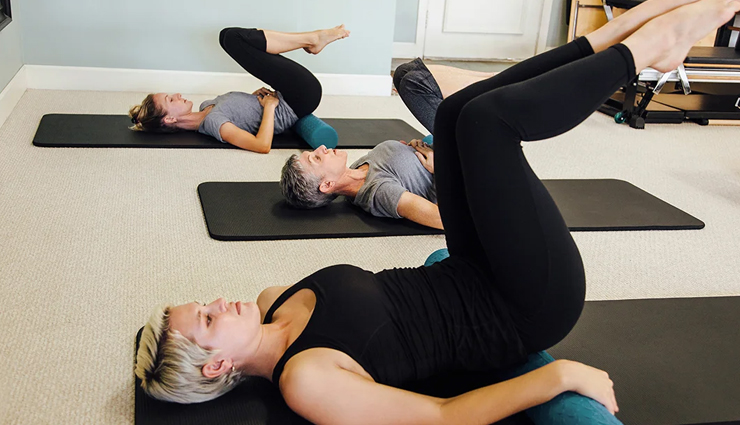
Pilates is a popular exercise method known for its ability to strengthen and tone the body, improve flexibility, and promote overall fitness. In addition to these benefits, Pilates can also be an effective tool for weight loss when combined with a healthy diet and regular cardio exercise. The focus on core strength, muscle activation, and controlled movements in Pilates helps to increase calorie burn and build lean muscle mass. In this article, we will explore 8 of the most effective Pilates exercises that can aid in quick weight loss.
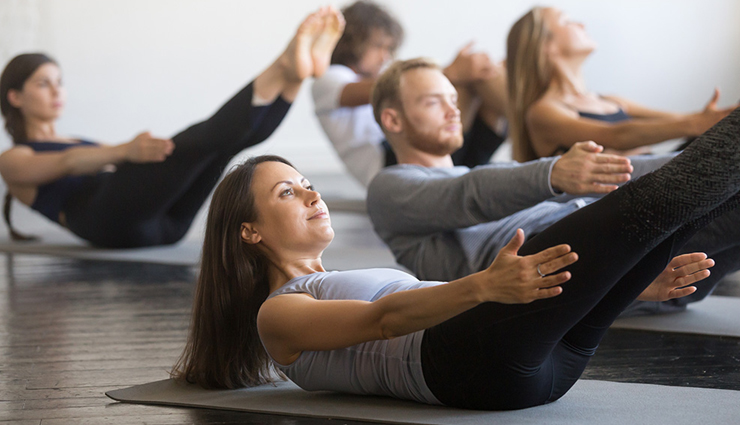
# Pilates Hundred
- Start by lying on your back on a mat or a comfortable surface with your legs extended and your arms by your sides.
- Engage your core muscles by drawing your navel towards your spine and pressing your lower back into the mat.
- Lift your legs off the ground, bending your knees at a 90-degree angle so that your shins are parallel to the floor.
- Lift your head, neck, and shoulders off the mat, keeping your gaze towards your abdominals.
- Extend your arms straight alongside your body, hovering them slightly off the ground.
- Begin the exercise by pumping your arms up and down in a small, controlled motion while inhaling for 5 counts and exhaling for 5 counts.
- Maintain your core engagement and keep your legs and torso stable throughout the exercise.
- Continue pumping your arms for a total of 100 counts (hence the name "Hundred"), focusing on deep, controlled breaths.
- Keep your shoulders relaxed and avoid straining your neck.
- After completing the 100 counts, lower your head, neck, and shoulders back down to the mat, and lower your legs back to the starting position.
- Take a moment to rest and recover before moving on to other Pilates exercises.
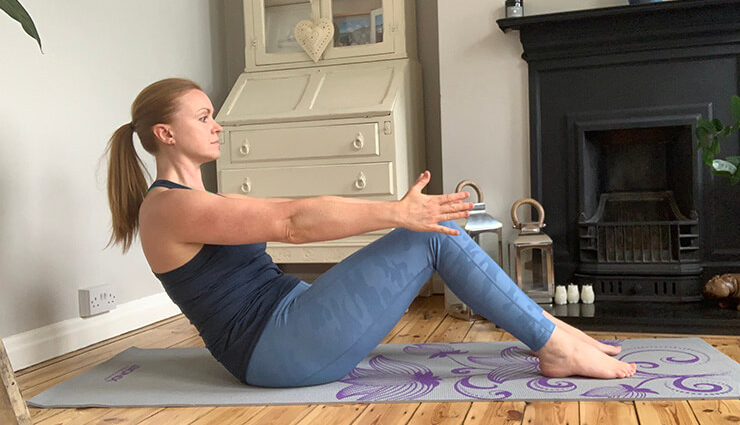
# Pilates Roll-Up
- Start by lying on your back on a mat or a comfortable surface with your legs extended and your arms stretched overhead, palms facing up.
- Engage your core muscles by drawing your navel towards your spine and pressing your lower back into the mat.
- Inhale deeply, and as you exhale, slowly begin to roll up your spine, one vertebra at a time, lifting your head, neck, and shoulders off the mat.
- Continue rolling up until your body is in a seated position, reaching your arms towards your feet, and keeping your spine as rounded as possible.
- Pause for a moment in the seated position, maintaining engagement in your core muscles and keeping your balance.
- Inhale again, and as you exhale, slowly begin to roll back down through your spine, lowering your upper back, mid-back, and finally your lower back to the mat, vertebra by vertebra.
- Keep your core muscles engaged throughout the movement and use control to articulate your spine.
- Once your back is fully back on the mat, extend your arms overhead and relax for a moment before repeating the exercise.
- Repeat the roll-up movement for the desired number of repetitions, focusing on maintaining a smooth and controlled motion.
- Remember to breathe continuously and avoid any jerky or forced movements.
- If you find it challenging to roll up smoothly, you can modify the exercise by bending your knees and using your hands to support and assist you in rolling up and down.
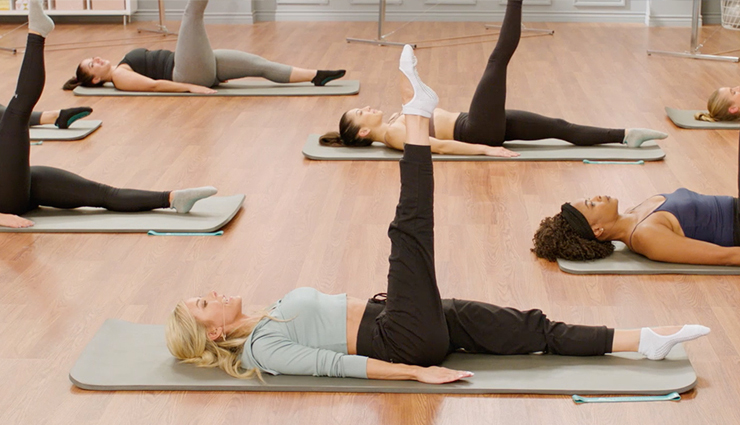
# Pilates Single Leg Circles
- Start by lying on your back on a mat or a comfortable surface with your legs extended and your arms by your sides.
- Engage your core muscles by drawing your navel towards your spine and pressing your lower back into the mat.
- Lift one leg off the mat, keeping it extended and pointing towards the ceiling. This will be your working leg for the exercise.
- Begin the exercise by tracing a circle with your working leg. Imagine drawing a large circle on the ceiling with your toes.
- Start by crossing your working leg across your body towards the opposite side, moving it down towards the mat, then bring it back up and out to the starting position.
- Complete the circle by continuing the movement in a clockwise direction, keeping your core engaged and your hips stable throughout.
- Maintain control and precision in your movements, focusing on using your core muscles to stabilize your pelvis.
- Perform the desired number of circles in one direction, then switch to the other direction.
- Keep your non-working leg relaxed and grounded on the mat, maintaining stability through your core.
- Remember to breathe continuously and maintain a steady and controlled rhythm throughout the exercise.
- After completing the desired repetitions or time on one leg, switch to the other leg and repeat the exercise.
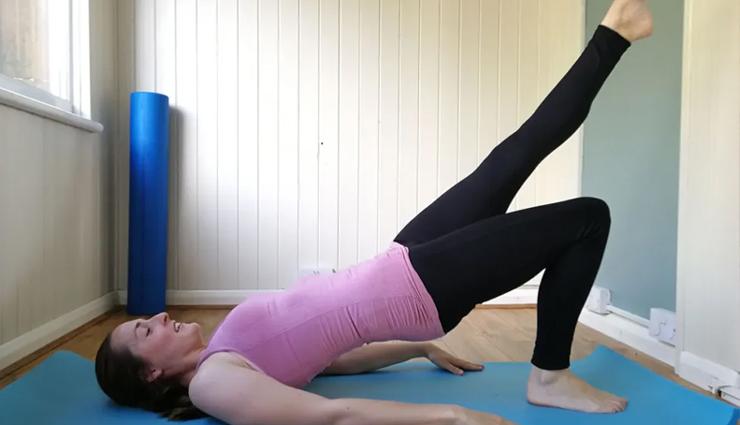
# Pilates Bridge
- Start by lying on your back on a mat or a comfortable surface with your knees bent and your feet flat on the floor. Keep your arms by your sides with your palms facing down.
- Engage your core muscles by drawing your navel towards your spine and pressing your lower back into the mat.
- Inhale deeply, and as you exhale, begin to lift your hips off the mat, pressing through your feet and engaging your glutes and hamstrings.
- Continue lifting your hips until your body forms a straight line from your knees to your shoulders. Your knees should be directly over your ankles.
- Hold the bridge position for a moment, maintaining stability and engagement in your core and lower body.
- Inhale again, and as you exhale, slowly begin to lower your hips back down to the mat, articulating your spine one vertebra at a time.
- Start by releasing your upper back, followed by your mid-back, and finally your lower back until your hips are back on the mat.
- Repeat the movement for the desired number of repetitions, focusing on maintaining control and proper form throughout.
- Avoid arching your lower back or lifting your hips too high, aiming for a straight line from your knees to your shoulders.
- Remember to breathe continuously, inhaling before lifting your hips and exhaling as you lower them back down.
- You can modify the exercise by placing a small Pilates ball or block between your thighs to add extra resistance and engagement for your inner thighs.
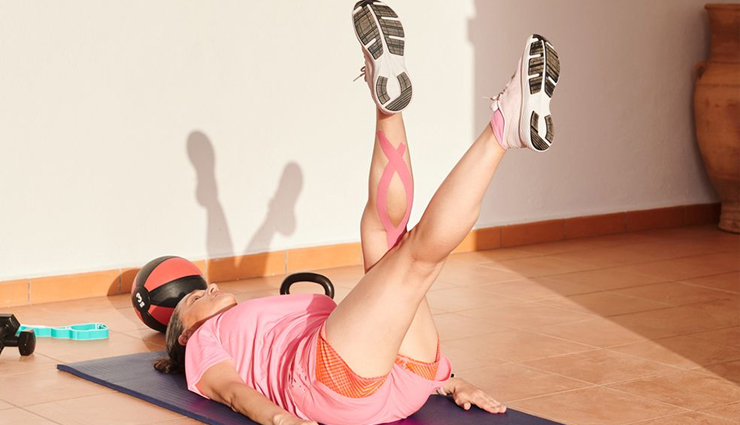
# Pilates Scissor
- Start by lying on your back on a mat or a comfortable surface with your legs extended and your arms by your sides.
- Engage your core muscles by drawing your navel towards your spine and pressing your lower back into the mat.
- Lift both legs off the mat, keeping them extended and pointing towards the ceiling. This will be your starting position.
- Inhale deeply, and as you exhale, lower one leg towards the mat while keeping the other leg lifted towards the ceiling.
- Keep your legs as straight as possible and maintain control and stability through your core.
- As you lower one leg, simultaneously lift the other leg towards the ceiling, using your abdominal muscles to switch the position of your legs.
- Inhale again, and as you exhale, continue switching the position of your legs, scissoring them up and down with control.
- Aim to maintain a steady and controlled rhythm throughout the exercise, focusing on engaging your core and maintaining proper form.
- Avoid any jerky or forced movements and keep your legs as straight as possible.
- Continue scissoring your legs for the desired number of repetitions or time.
- Remember to breathe continuously, inhaling and exhaling with each leg switch.
- You can modify the exercise by bending your knees slightly if you find it challenging to keep your legs straight.
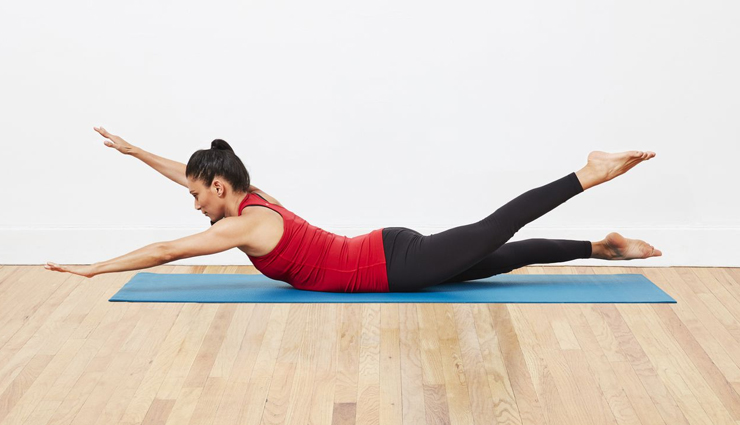
# Pilates Swimming
- Start by lying on your stomach on a mat or a comfortable surface with your legs extended and your arms extended overhead.
- Engage your core muscles by drawing your navel towards your spine and lengthening your spine.
- Inhale deeply, and as you exhale, lift your upper body, arms, and legs off the mat simultaneously.
- Begin the exercise by fluttering your arms and legs in an alternating motion, similar to swimming.
- Keep your head and neck aligned with your spine, looking down towards the mat.
- Maintain a steady and controlled rhythm, focusing on engaging your core and keeping your movements precise.
- Continue fluttering your arms and legs for the desired number of repetitions or time, maintaining control and stability.
- Breathe continuously throughout the exercise, inhaling and exhaling in a natural pattern.
- As you perform the exercise, imagine lengthening and reaching through your limbs.
- To increase the challenge, you can lift your arms and legs higher off the mat or increase the speed of the fluttering motion.
- Remember to listen to your body and work within your own limits. If you experience any pain or discomfort, modify the exercise or consult with a certified Pilates instructor for guidance.
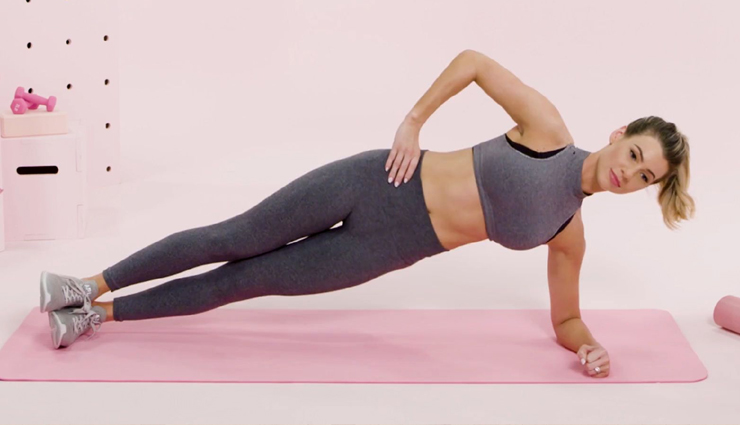
# Pilates Side Plank
- Start by lying on your side on a mat or a comfortable surface. Position yourself so that your bottom elbow is directly underneath your shoulder and your legs are stacked on top of each other.
- Engage your core muscles by drawing your navel towards your spine and lengthening your spine.
- Press through your bottom forearm and lift your hips off the mat, coming into a side plank position. Your body should form a straight line from your head to your feet.
- Keep your top arm extended towards the ceiling or place it on your hip for additional support and stability.
- Focus on maintaining stability through your core and avoid sagging or collapsing in your hips or shoulders.
- Hold the side plank position for the desired amount of time, aiming for a steady and controlled hold.
- Remember to breathe continuously throughout the exercise, inhaling and exhaling in a natural pattern.
- To increase the challenge, you can lift your top leg off the bottom leg or reach your top arm towards the ceiling and then underneath your body, threading the needle.
- After holding the side plank on one side, switch to the other side and repeat the exercise.
- Listen to your body and work within your own limits. If you experience any pain or discomfort, modify the exercise or consult with a certified Pilates instructor for guidance.
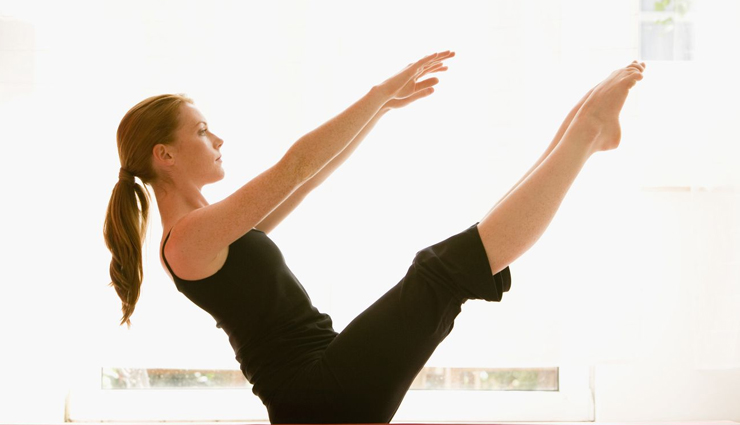
# Pilates Teaser
- Start by lying on your back on a mat or a comfortable surface with your legs extended and your arms stretched overhead, palms facing down.
- Engage your core muscles by drawing your navel towards your spine and pressing your lower back into the mat.
- Inhale deeply, and as you exhale, begin to lift your head, neck, and shoulders off the mat, curling your upper body into a forward flexion position.
- At the same time, lift your legs off the mat, keeping them straight and reaching towards the ceiling.
- Continue to roll your spine up off the mat, lifting your torso and legs until you are balanced on your sit bones, forming a "V" shape with your body.
- Your arms should be reaching parallel to your legs, and your upper body should be lifted off the mat, maintaining a rounded spine.
- Hold the teaser position briefly, focusing on maintaining balance and engagement in your core muscles.
- Inhale again, and as you exhale, slowly begin to roll your spine back down to the mat, articulating each vertebra at a time.
- Lower your legs back down to the mat, followed by your upper body, until you are back in the starting position.
- Repeat the movement for the desired number of repetitions, focusing on maintaining control and proper form throughout.
- Remember to breathe continuously, inhaling before lifting your body and exhaling as you lower it back down.
- If you find it challenging to lift both legs simultaneously, you can modify the exercise by bending one knee and extending the other leg, alternating sides.
Note: It's always a good idea to consult with a fitness professional before starting any new exercise program, especially if you have any pre-existing medical conditions or injuries.





